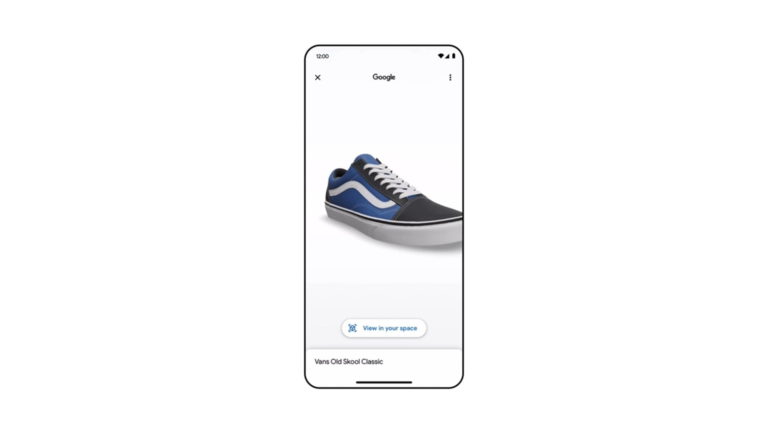
Among the AR sub-segments that we track, one of the most revenue-producing today is AR marketing. In fact, our research arm ARtillery Intelligence estimates that AR marketing spend – including paid ad placement and campaign creation – will reach $11.8 billion by 2028.
But the question is how that’s coming together. What’s driving it? Who’s leading the way? And what are best practices in the still-developing AR marketing playbook? This is the topic of a recent ARtillery Intelligence report that presents several AR marketing case studies and top takeaways.
For today’s purposes, it’s also the subject of a recent ARtillery Briefs episode, with summarized takeaways and video below. For those unfamiliar, this is our video series that features “insights in under 5 minutes,” for digestible takeaways from ARtillery Intelligence reports.
Faces & Spaces
Before diving into the report’s takeaways and AR marketing examples, some definitions are in order. When we say AR marketing, we’re talking about campaigns that allow consumers to activate their smartphone cameras and overlay branded animations on faces and spaces.
Here, brand adoption is driven by a few factors. First, there’s growing user demand for immersive experiences – especially around socially-fueled lenses. Brands are also drawn to the ability to demonstrate products in 3D, which offers greater creative capacity than 2D ads.
Joining those factors is another powerful driver: ROI. The business case for AR marketing continues to be validated through performance metrics. This includes high reach through channels like Snapchat, as well as high engagement (e.g., dwell times) and product conversions.
To that end, AR has the rare ability to span the purchase funnel. We’re talking upper-funnel brand awareness (usually seen in things like TV ads and billboards), and lower-funnel direct response (seen in high-intent media like search). AR can achieve both awareness and action.
Interest & Intent
Those funnel stages are important to understand because AR campaigns often map to different parts. This is a function of brand marketers’ goals. Are they going for massive reach to solidify their brand positioning and product awareness? Or are they going for measurable sales?
Upper-funnel campaigns include Samsung, which achieved 26 million views for its TikTok AR campaign. This reach, combined with the levels of hands-on engagement and interactivity for AR lenses, breed interest and intent which lead users further down the funnel.
Mid-funnel AR campaigns draw users closer to a transaction through experiences that have high session lengths or dwell times. This was seen in several case studies in this report, including Anheuser Busch’s lens campaign which saw one and a half minute average dwell time.
On to the lower funnel, brands are achieving high conversion rates and measurable sales through AR. For example, Unilever saw an 8 percent conversion rate for its web AR campaign – high performance considering that online banner ad conversions are generally a fraction of a percent.
Reliable vs. Robust
Through all this, what are the biggest campaign success factors? One attribute is brands that commit to AR, as opposed to doing one-off campaigns. This not only advances AR competency over time but allows them to amortize expenses (e.g., 3D model creation) over several campaigns.
Another important lesson is that technical complexity isn’t always required for AR success. It’s better to prioritize user experience. For example, use graphics with low poly counts that are more reliable than they are robust. In that sense, web AR has lots of advantages and lowered friction.
Also consider marker-based AR, such as QR codes. This is sometimes deemed passe in the AR world, but it has merits such as nudging users and reminding them that AR is there through a familiar symbol. This explicit activation trigger is frankly what AR needs at this stage.
Further in support of QR codes as an AR activation point, this applies to brands that already have physical signage or static product packaging. They can lean on these already-owned assets and bring them to life through AR – another place where brands can amortize sunk costs.
Case Study: Samsung Boosts Brand Awareness with TikTok Effects
History Repeats
The above campaigns are just a few examples, but they demonstrate AR’s range of applicability, as it expands into new verticals. This growth will accelerate as AR migrates to the rear-facing camera to augment the broader canvas of the physical world, versus selfie lenses and filters.
But as that adoption curve plays out, there’s parallel evolution that needs to happen with AR’s underlying technology and value chain. Examples include scalable 3D asset creation and optimization for large product libraries, and analytics to better capture AR performance.
On the bright side, these gaps represent opportunities for AR startups. Just like the ecosystem that formed around mobile advertising over the past decade, AR marketing holds ample opportunity for supporting technologies and “picks and shovels,” to help bring it all together.
And for brand marketers themselves, there’s a great deal of learning and innovating to be done as the AR marketing playbook develops. So you can think of AR marketing today like mobile advertising around 2010: Lots of headroom and opportunity, but also lots more to learn.






